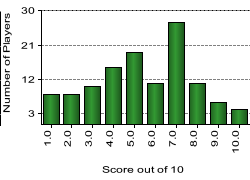Quiz Answer Key and Fun Facts
1. Neoclassicism was originally a reaction against the previous generation of artists from what style?
2. How many eras is neoclassicism generally broken down into?
3. L'Arc de Triomphe is one of the recognizable products of the late 18th century romantic neoclassical movement. The monument is at the center of the Place Charles de Gaulle (formerly the Place de l'Étoile) and was completed for Napoleon in what decade?
4. What 18th century French sculptor created both 'Saint John the Baptist' and 'Saint Bruno' in 1766 and is known for being on the outer fringes of neoclassicism in terms of relating Greco-Roman themes?
5. What painting by Jacques Louis David glorifies a martyr of the French Revolution and employs chiaroscuro to portray the aftermath of the man's assassination?
6. The sudden popularity of the neoclassical style was due to new discoveries, travels, and publications in the field of archeology at sites excavated in what country?
7. Theoretical treatises by this man contributed to the rise of neoclassicism in Europe with his writings advising artists to not copy, but observe nature through their own eyes as the ancients did.
8. This famous painter of the first half of the 19th century won the Prix de Rome in 1801 with 'Ambassadors of Agamemnon Arriving at the Tent of Achilles'. His later works, such as 'Turkish Bath' (1859) and 'Grande Odalisque' (1814), showed his unorthodox style, which earned him a spot on the French Academy in Rome and a Cross of the Legion of Honor from Charles X.
9. One of the most widely propagandized works of art during the French Revolution was painted by Jacques Louis David in 1784. It depicts three triplets honoring Rome, willing to fight to the death against triplets from a rival empire, with their wives crying behind them. This is 'The Oath of the __________'.
10. As the neoclassical style was declining in the mid 19th century, from what source did the neoclassicism derive new inspiration?
Source: Author
GWU_Boy
This quiz was reviewed by FunTrivia editor
coolupway before going online.
Any errors found in FunTrivia content are routinely corrected through our feedback system.

